Israel Aquarium, Jerusalem – Attraction for all Seasons
Israel Aquarium in Jerusalem is an excellent place for animal lovers. Moreover, it is also devoted to protecting marine habitats.
Notes:
- If you want information about the Eilat aquarium, check out Underwater Observatory Marine Park.
- Check out Zoos and Aquariums in Israel for additional information about animals and wildlife.
Table of Contents
- 1 Map
- 2 Directions
- 3 Opening Hours
- 4 Tours
- 5 Entrance Fee
- 6 Coupons and Discounts
- 7 Contact Information
- 8 About Israel Aquarium
- 9 Entrance Hall
- 10 Four Seas of Israel Gallery
- 11 Mediterranean Shoreline
- 12 The Sherover Discovery Gallery
- 13 Mediterranean Sea Gallery
- 14 The Suez Canal
- 15 First Red Sea Gallery
- 16 Jellyfish Gallery
- 17 Second Red Sea Gallery
- 18 Shell Collection
- 19 Guardians of the Sea Gallery
- 20 The Butterfly Exhibition
- 21 Common Questions
- 22 Summary
Map
Israel Aquarium is located at Aharon Shulov 1, Jerusalem, near Jerusalem Biblical Zoo.
Directions for drivers: Link to Waze and Link to Google Maps
Directions for public transport: Link to Moovit
Interactive map of the area:
Here is the map of the Israel Aquarium:
Note: you can click on the map to enlarge it.
The Israel Aquarium is situated in one big building. The structure is divided into thirteen different spaces. And they are all placed conveniently on a loop trail. Completing this trail takes about two hours.
Directions
If driving, enter the “Israel Aquarium” or the above address into the navigation app. Moreover, there are many free parking spaces near the entrance.
If you arrive by public transport, here is a link to Moovit, where the endpoint is set. Thus, change the starting point to your location, and you will get the updated directions. Also, I want to mention the train station near the zoo (named after the zoo). Walking from the train station to the aquarium will take 10 – 15 minutes.
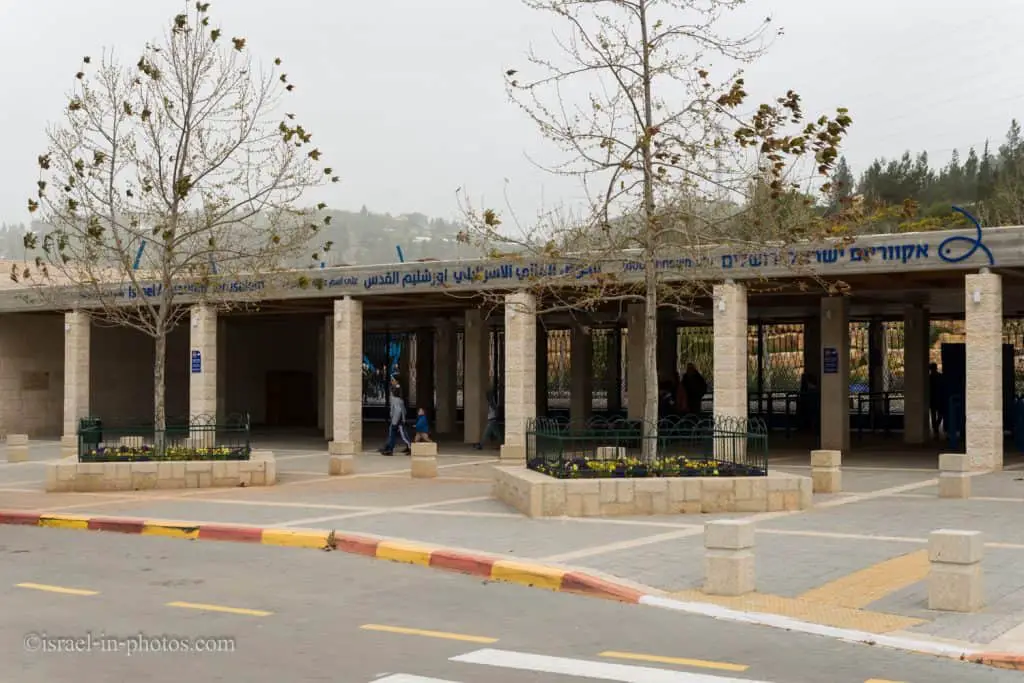
Opening Hours
Sunday – Thursday, and Saturday: 09:00 – 17:00
Friday: 09:00 – 16:00
Previously, you were required to purchase tickets in advance for a specific time slot. This requirement is no longer listed, but I would advise purchasing tickets at the official site (see the tours section).
Note: The last entrance is allowed up to two hours before closure.
Tours
There are aquarium tours in English and Hebrew. And when you are looking for available time slots, you can search for days with tours. These tours are included in the ticket price.
When we visited, we did not register for one of the tours. But there were guides at each station. They provided short explanations, and we joined those short sessions.
Entrance Fee
Adult – 62 NIS
Child (3 – 18 years old) – 51 NIS
Zoo members: Adult – 48 NIS, Child – 38 NIS
Student, soldier, or senior – 51 NIS
Note: ticket prices were updated in January 2023. In any case, recheck the official site before visiting.
Coupons and Discounts
In January 2023, I searched for coupons online and found only the following deal:
- Yerushalmi – 54 NIS per adult and 45 NIS per child
Also, you can look for a coupon at the following places:
- cuponofesh
- htzone
- yours
- behatsdaa
- hist.org.il
- And different worker’s associations.
Contact Information
Phone: 073-3399000
Email: info@israel-aquarium.org.il
Facebook page: @israelaquarium
About Israel Aquarium
The Gottesman Family Israel Aquarium, Jerusalem is a public aquarium in Israel inaugurated on 19.6.2017. The aquarium focuses on Israel’s marine environment – the Red Sea and the Mediterranean Sea, as well as on the Sea of Galilee and the Dead Sea. The Israel aquarium was built by the Tish Family Zoological Gardens (the Biblical Zoo in Jerusalem) and is located next to it, but stands on its own as a separate tourist attraction. The aquarium will open to the general public for running in the period during the summer of 2017.
Source: Wikipedia
Entrance Hall
You can see a small Koi pond with sitting places and a small shop near the main building.
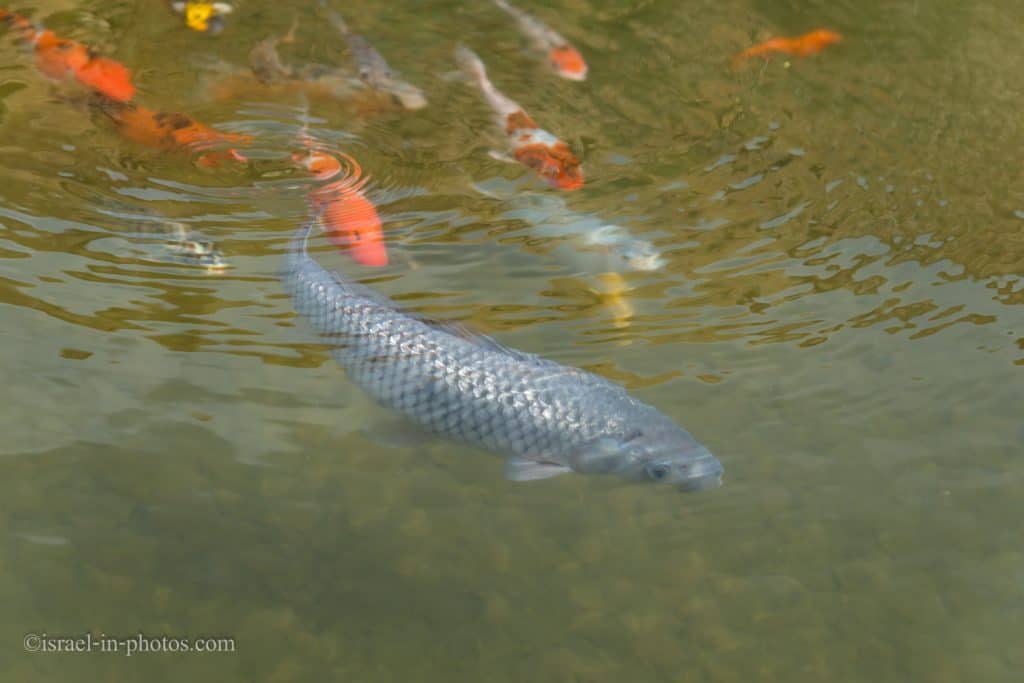
The whole attraction is inside an airconditioned building, making it perfect for visiting during bad weather (rainy or hot). On one occasion, we visited the Israel Aquarium on a rainy Saturday.
One important note before entering the Israel Aquarium: you are allowed to photograph, but the use of flash is forbidden. So, disable flash before entering.
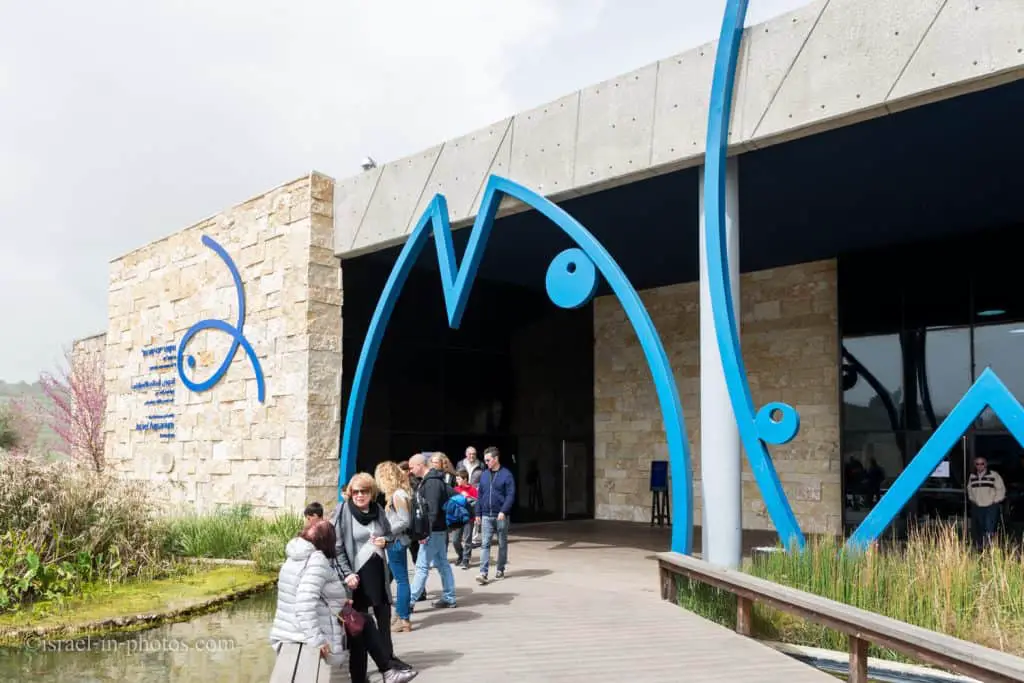
The entrance hall includes an information booth and locker room. This hall contains the first exhibit – a schooling display with hundreds of fish swimming to the right and marking the beginning of the route.
Source: Wikipedia
You can find the information booth, lockers, and basic information like “what is a fish” at the entrance.

As you can see, all explanations are in Hebrew, Arabic, and English.
Four Seas of Israel Gallery
Next in line, after the entrance hall, is the Four Seas of Israel Gallery.
This gallery presents the seas of Israel – the Sea of Galilee, the Red Sea, the Mediterranean Sea, and the Dead Sea. The Sea of Galilee exhibit displays cichlid fish (Jordan Saint Peter’s fish), and the Dead Sea has a dry exhibit framed. In the Mediterranean Sea exhibit, presented in seaside ruins that resemble the Caesarea area, contains gilt-head sea bream (Denis) fish. In the Red Sea, several dozen lionfish of two species fascinate by gliding up and down a central column of colorful corals.
Source: Wikipedia
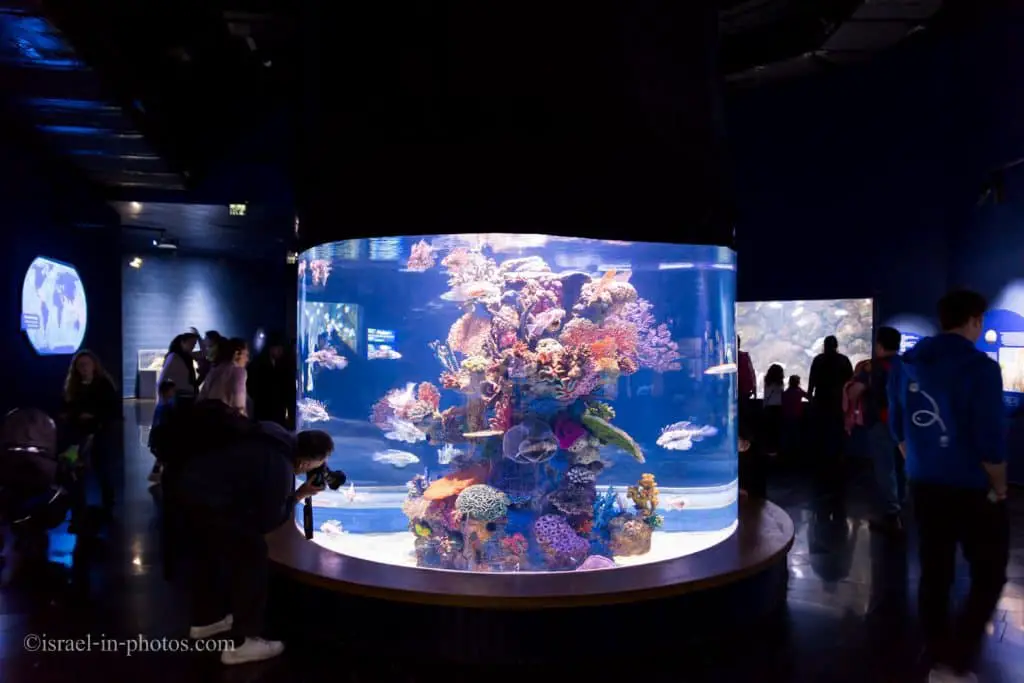
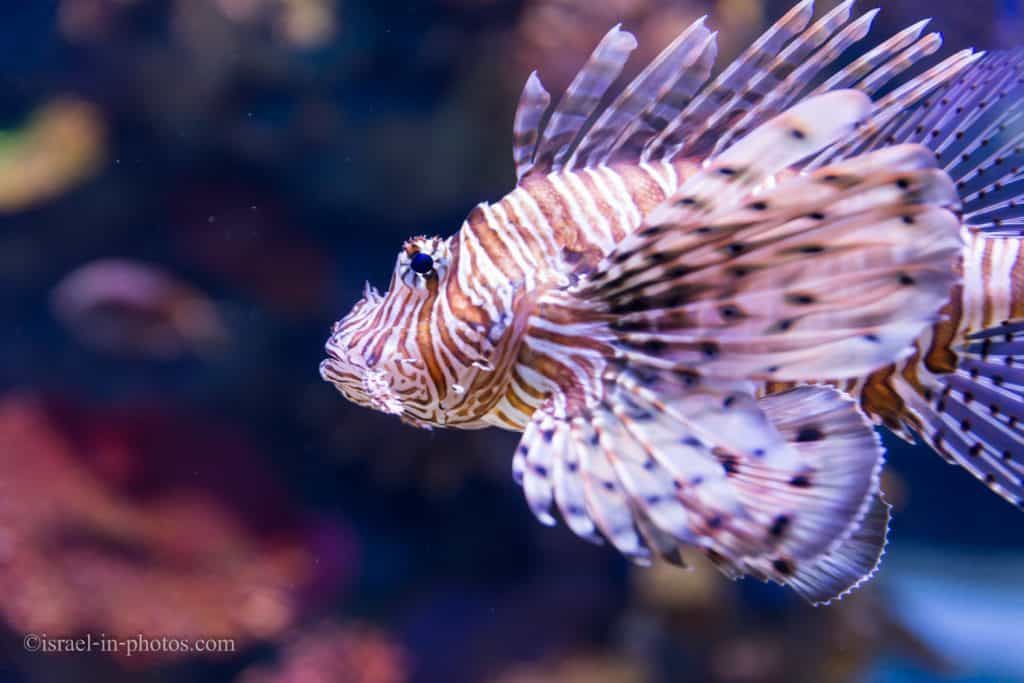
The aquarium in the center represents the Red Sea, which can be accessed through Eilat. Also, it is worth mentioning that you can find Underwater Observatory Marine Park in Eilat.
The Dead Sea or Salt Sea is a saltwater lake that lies in the Great Rift Valley lake is located at the lowest point on earth (430 m below sea level) and its water sources are the Jordan River and seasonal floodwater. The Dead Sea is known as the ‘Salt Sea’ in Hebrew because it is a hypersaline lake (34%), 9.6 times saltier than ocean water.
Moreover, the Dead Sea and its surrounding interesting geological formations include salt crystals and a wealth of minerals such as potassium magnesium and bromine – all mined by industries in Israel and Jordan.
The Dead Sea’s name in English is not meant to be menacing. it simply derives from the lack of fish and other animals in its waters.
Source: sign
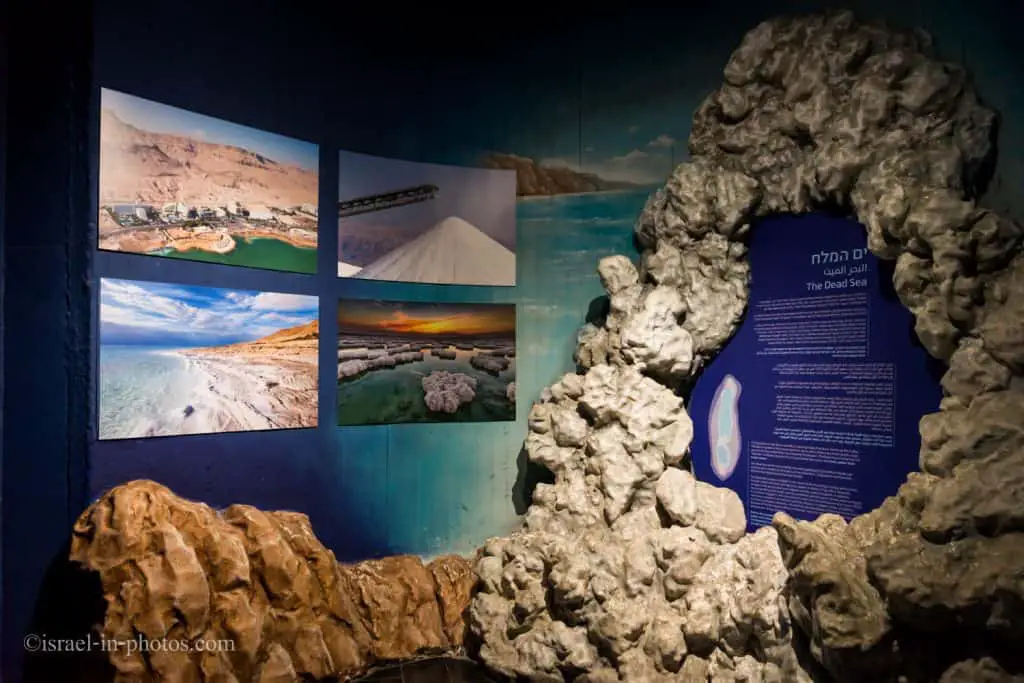
And though the Dead Sea has no fish, it is also represented. But the interesting fact is that it is not a sea but a lake. And it is not the only sea in Israel, a lake. You can find the reason behind it in my complete guide about the Sea Of Galilee.
Mediterranean Shoreline
The Mediterranean Shoreline is the point of interest #3 on the map. It demonstrates a typical seashore with bouncy waves.
This exhibit presents the Israeli seashore that is divided into two habitats – the rocky seashore and the sandy beach.
Source: Wikipedia
The Sherover Discovery Gallery
And we will skip to The Sherover Discovery Gallery (point of interest #3 on the map).
The Discovery Gallery contains various smaller exhibits that seek to introduce unique aspects of marine habitats. In the first exhibit, you can see a shipwreck and a gas or oil drill, and a band of barbed wire. In the open pool, you can feed common stingrays. Around the pool, different exhibits contain seahorses, stonefish, frogfish and ribbon eels.
Source: Wikipedia
In the center, you see the ray feeding pool. But the guide told us they had an unsuccessful pilot and thus stopped with stingray feeding.
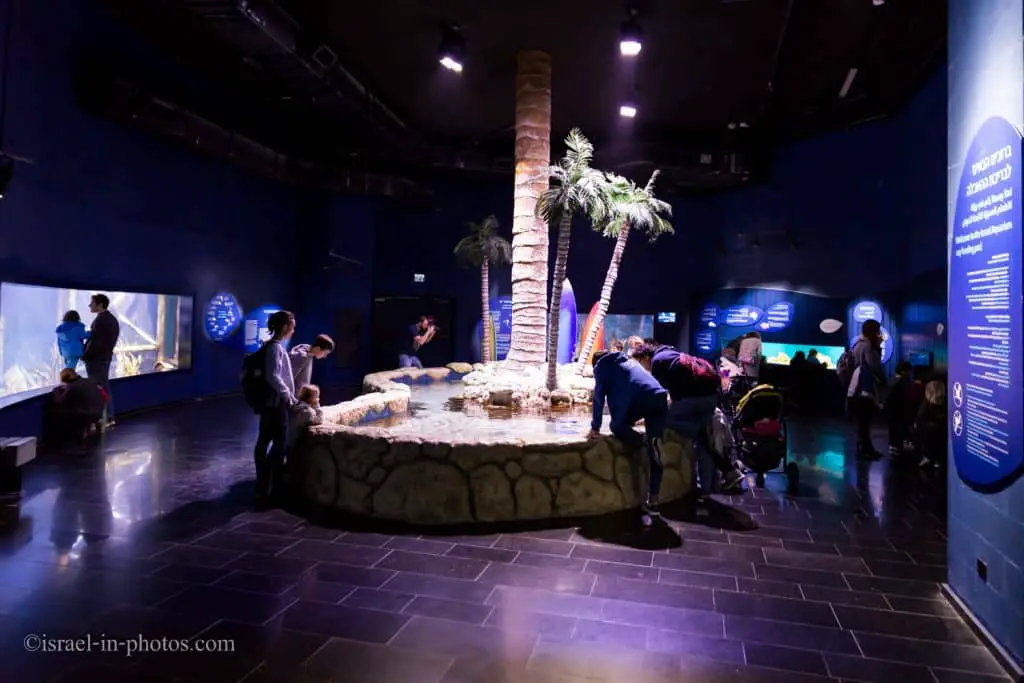
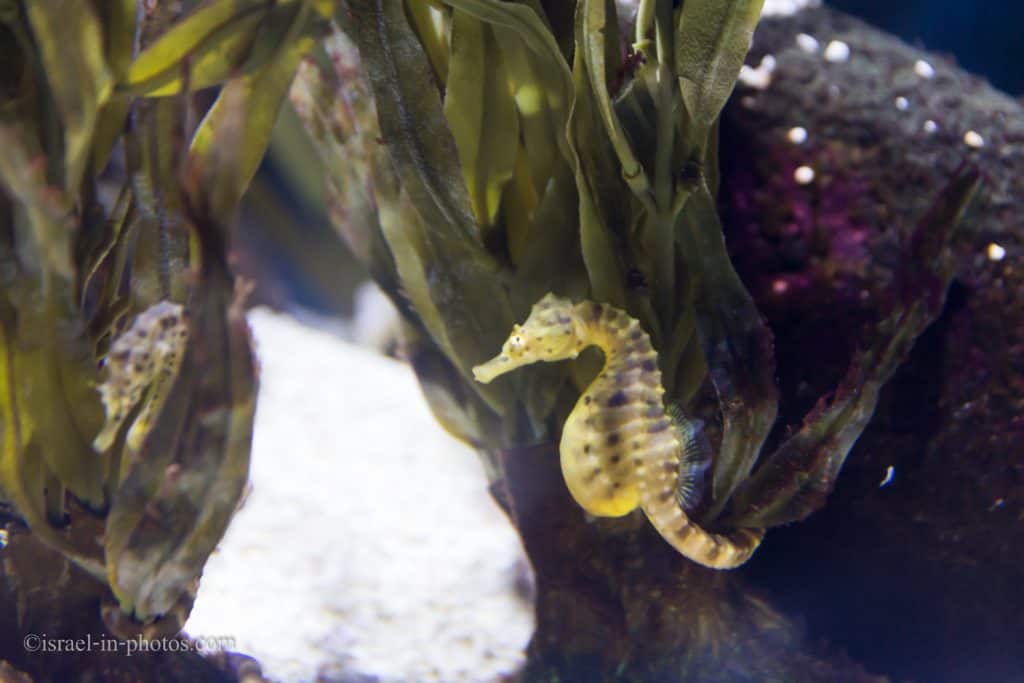
In the Sherover Discovery Gallery, you can also find aquariums with fish that use camouflage. For example, the stonefish.
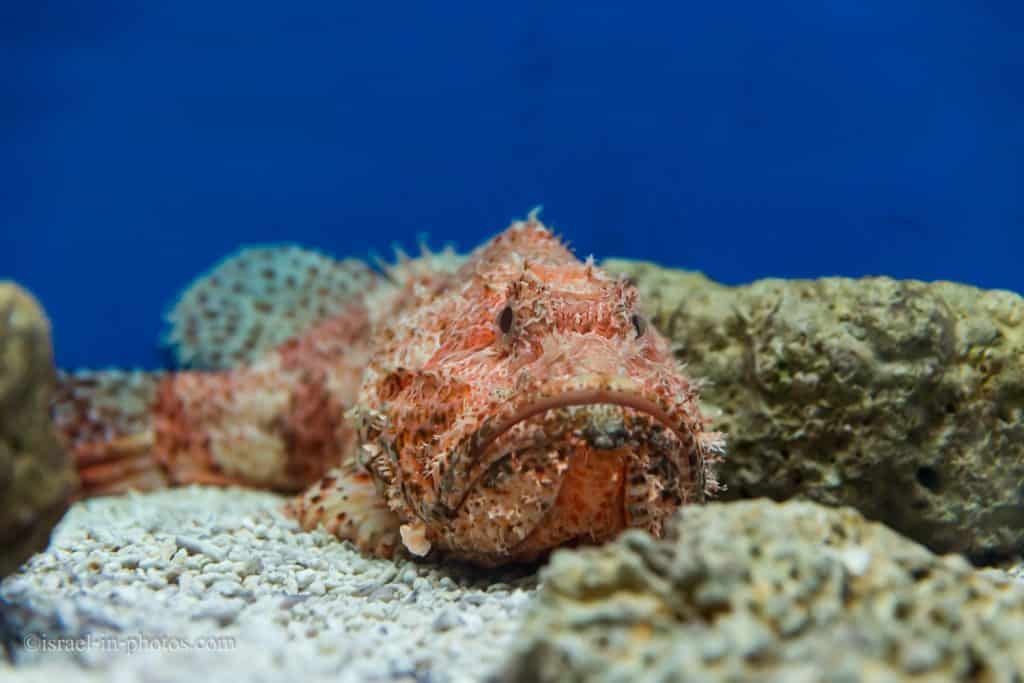
As you can guess from its name, the stonefish uses camouflage to hide in rocks and sand. And if you see one, keep your distance. They have venomous spines on the dorsal fin and can be fatal to humans.
Another interesting species is the frogfish.
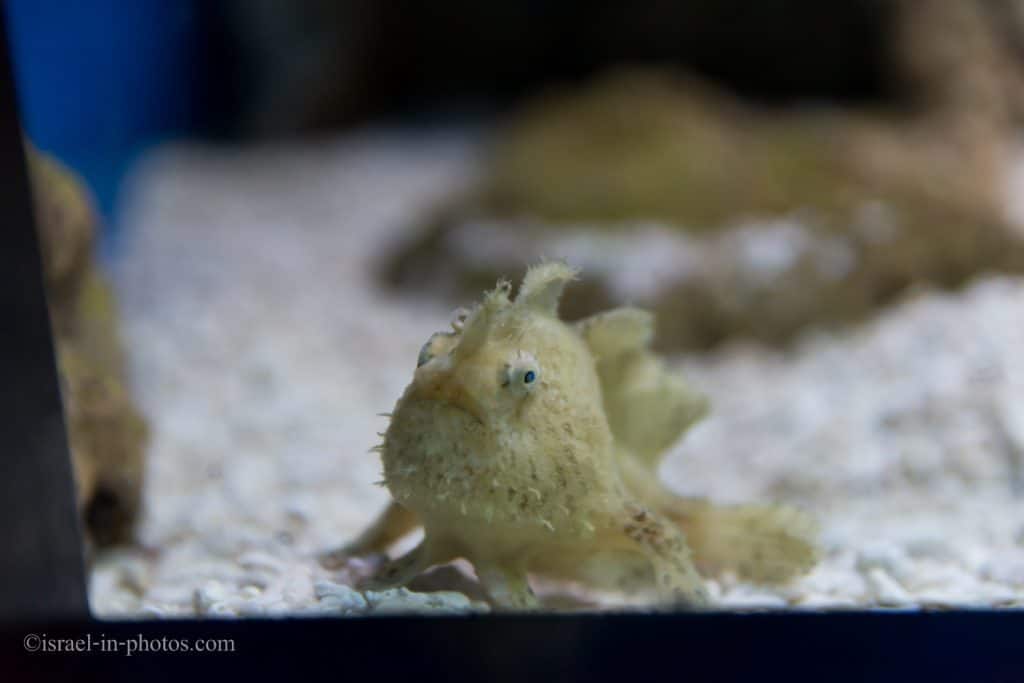
The frogfish has a worm-shaped strand on its head. And using it, it lures other fish. So basically, the frogfish uses a fishing technique to catch other fish.
Mediterranean Sea Gallery
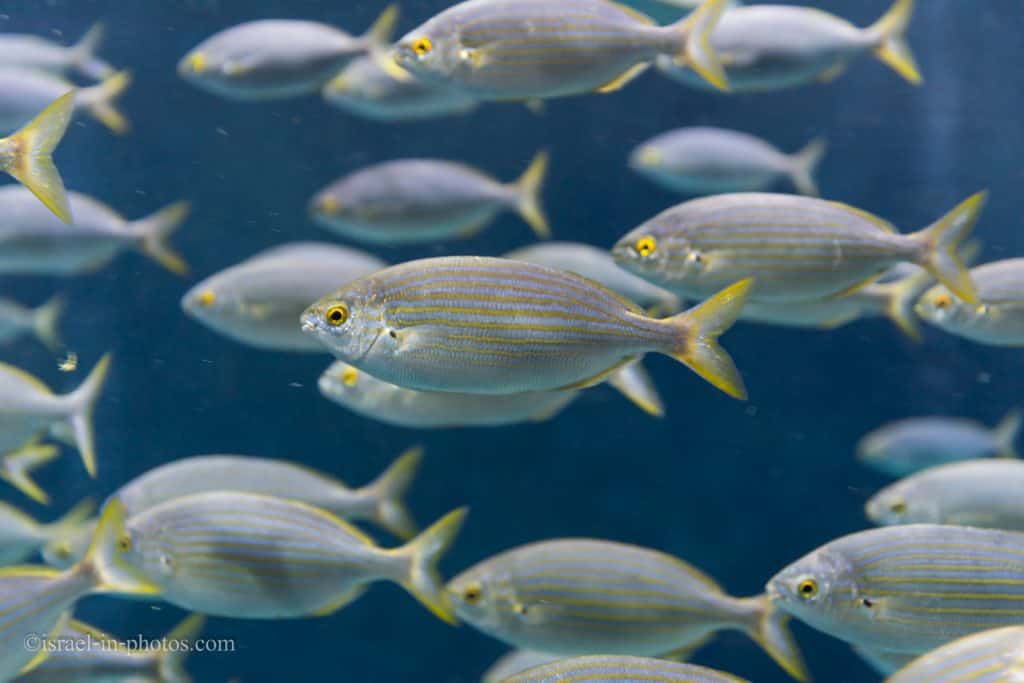
The gallery begins with Mediterranean fish species such as mullet and continues with ray and eel species.
The exhibit also includes a huge tank of 1,500,000 liters of water with an underwater viewing tunnel and a large hall with a huge viewing window measuring 17 meters long and 5 meters high.
Source: Wikipedia
You can learn about some Mediterranean Sea problems in this gallery. One of them is overfishing. Another problem is pollution, specifically plastic.
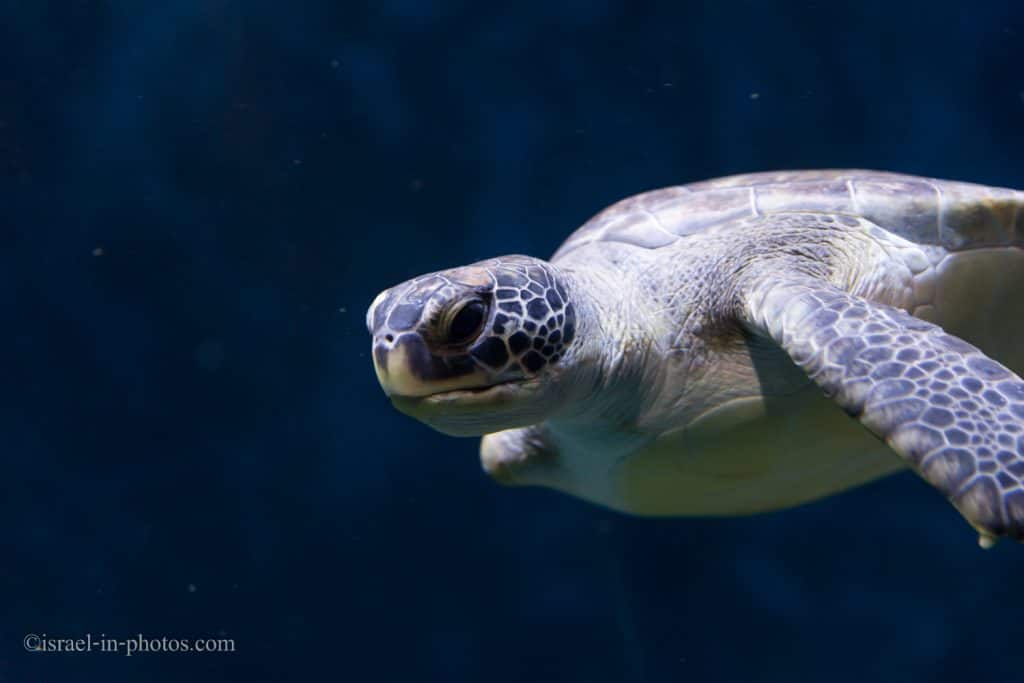
There are two sea turtles. They arrived at Sea Turtle Rescue Center after rehabilitation. Both of these sea turtles had mixed up in plastic pollution. And though the rescue team could save them, each lost a limb.
Note: did you know that there are Nile softshell turtles in Israel? See Turtle Bridge at Alexander River for additional details.
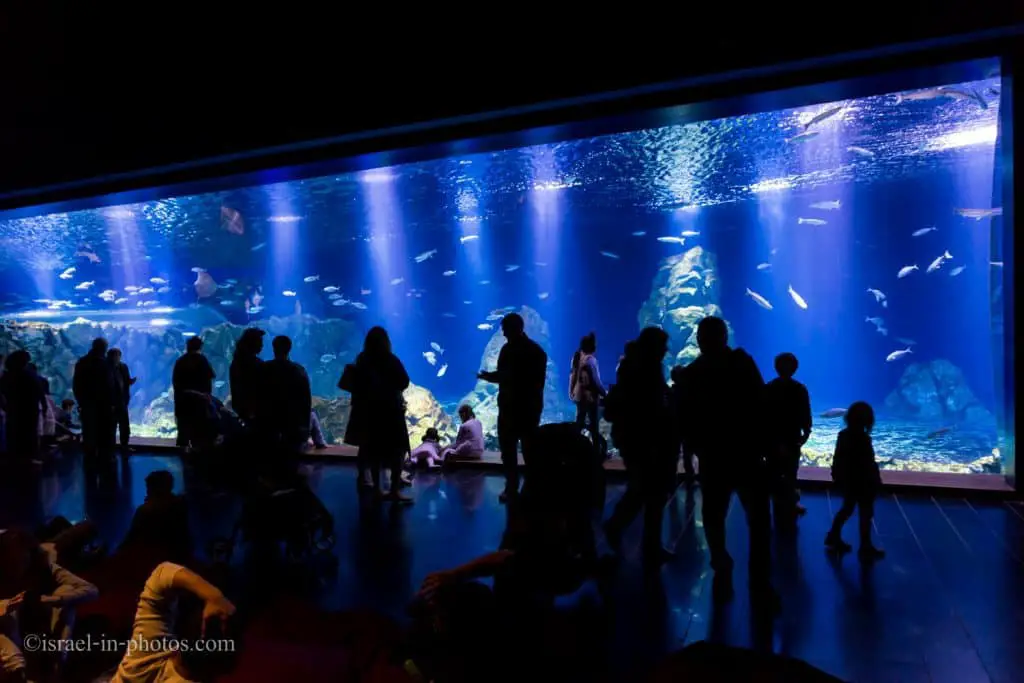
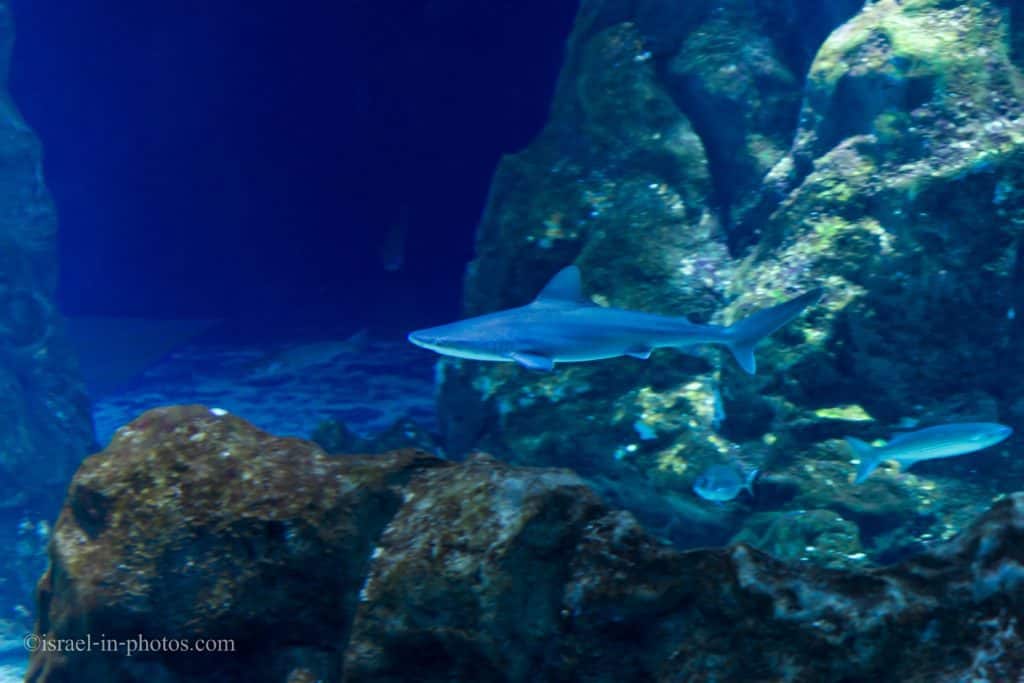
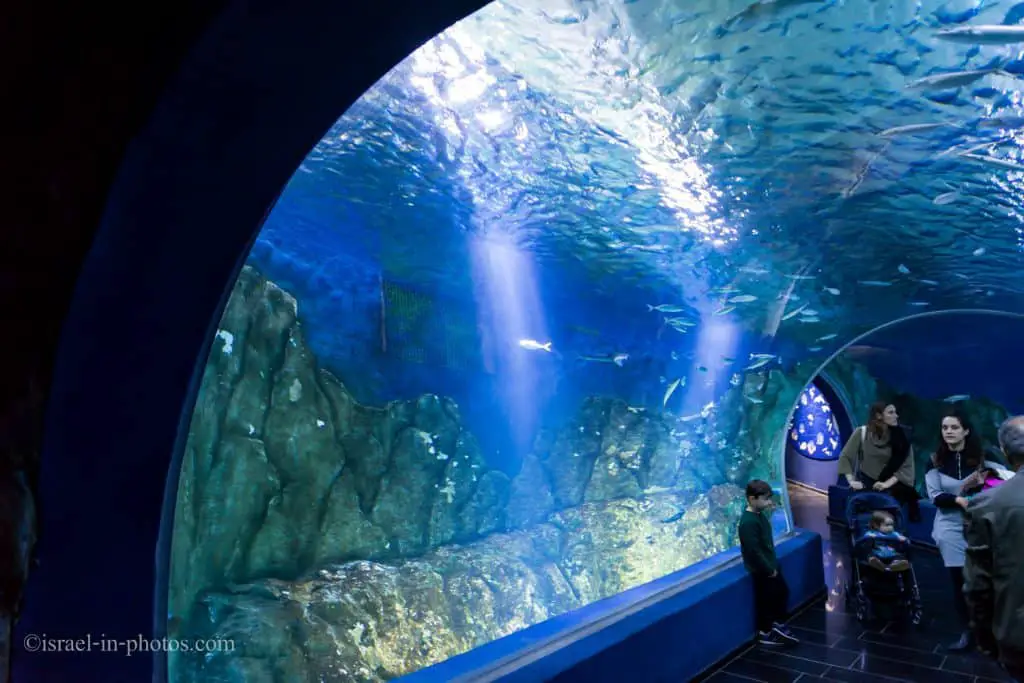
Did you know that sharks constantly replace their teeth? And over a lifetime, some may lose 30000 teeth.
The Suez Canal
We have reached the point of interest #7 on the map, the Suez Canal. There we watched a short movie about the Suez Canal.
The Gallery connecting the Mediterranean Sea and the Red Sea presents a four-minute film documentary explaining the construction of the Suez Canal and its environmental effects. The film focuses mainly on the phenomenon of Lessepsian migration – migration of species from the Red Sea to the Mediterranean.
Source: Wikipedia
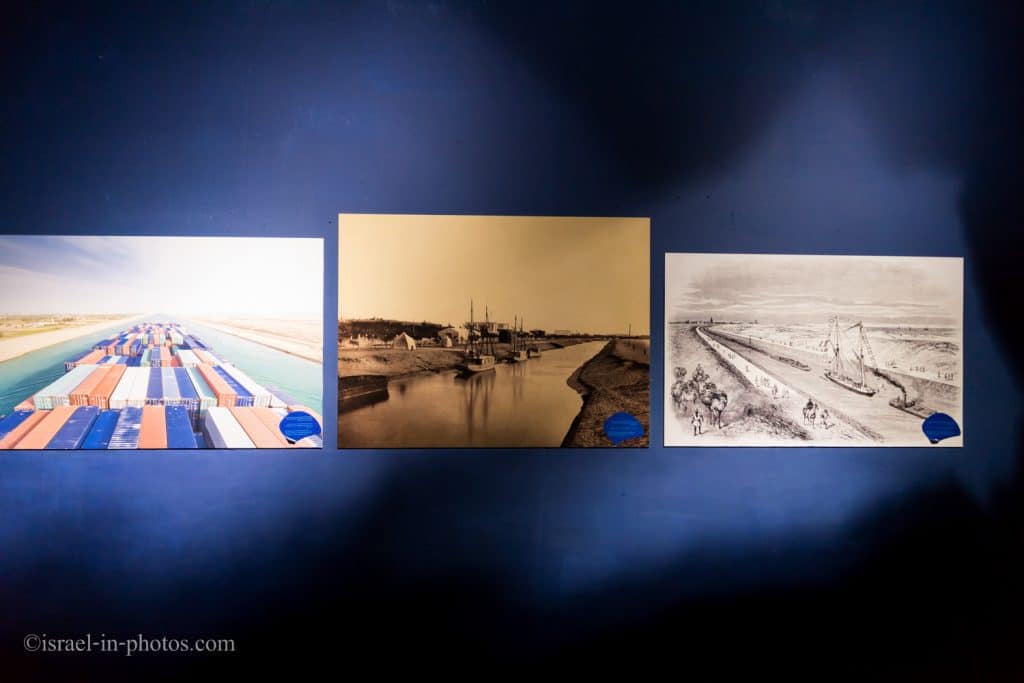
As it turns out, many species traveled from the Red Sea to the Mediterranean sea. Here is the translated quote from the official site:
In the summer of 2015, a parallel canal called the New Suez Canal was opened. That made it possible to increase the number of sailing vessels between the Mediterranean and the Red Sea to 90 vessels a day.
The opening of the canal created the first saltwater passage between the Mediterranean and the Red Sea. For many years, the migration of species from the Red Sea to the Mediterranean was prevented by the “bitter lakes” – natural seas whose waters are saltier than seawater, which served as a natural barrier. But due to the flow of water from the Red Sea to the Mediterranean, through them and comparing salaries, the barrier was removed, and plants and animals from the Red Sea began to appear and settle in the eastern Mediterranean.
Because the Red Sea is salty and poor in fertilizers and food relative to the Mediterranean, species derived from it have a significant advantage over Mediterranean species. Because of this advantage, we find mainly species from the Red Sea that migrated to the Mediterranean, and only a few species did the opposite way. This immigration phenomenon was named “Lessepsian migration” after the name of the French diplomat who oversaw the construction of the canal, Ferdinand de Lasses.
Invasive species, originating in the Red Sea and moving to the Mediterranean via the canal, have become part of the fabric of Mediterranean habitat. They have a considerable impact on marine ecology while competing and threatening the native species. About 300 species of the Red Sea have already been identified in the Mediterranean, and there are probably many other species that have not yet been identified. The recent expansion of the canal has raised concerns among marine scientists and biologists that the phenomenon of immigration will expand.
First Red Sea Gallery
In this gallery, you can see hundreds of clownfish (immortalized in the film “Finding Nemo”). These fish came from a special breeding farm in the Arava. In this gallery, there are other species such as Naso tangs and a unique exhibit of living corals.
Source: Wikipedia
As mentioned in the comment, there are many clownfish in this gallery. But they are not swimming in a regular fish tank. Kids can crawl underneath and pop their heads in the center of this aquarium. Hence, kids enjoy the extra activity, and parents get engaging photos.
Overall, many spots in the Israel Aquarium are dedicated to photography. Whether it is unique aquariums, additional lights, or places for selfies, when planning this place, they thought about the family photography aspect.
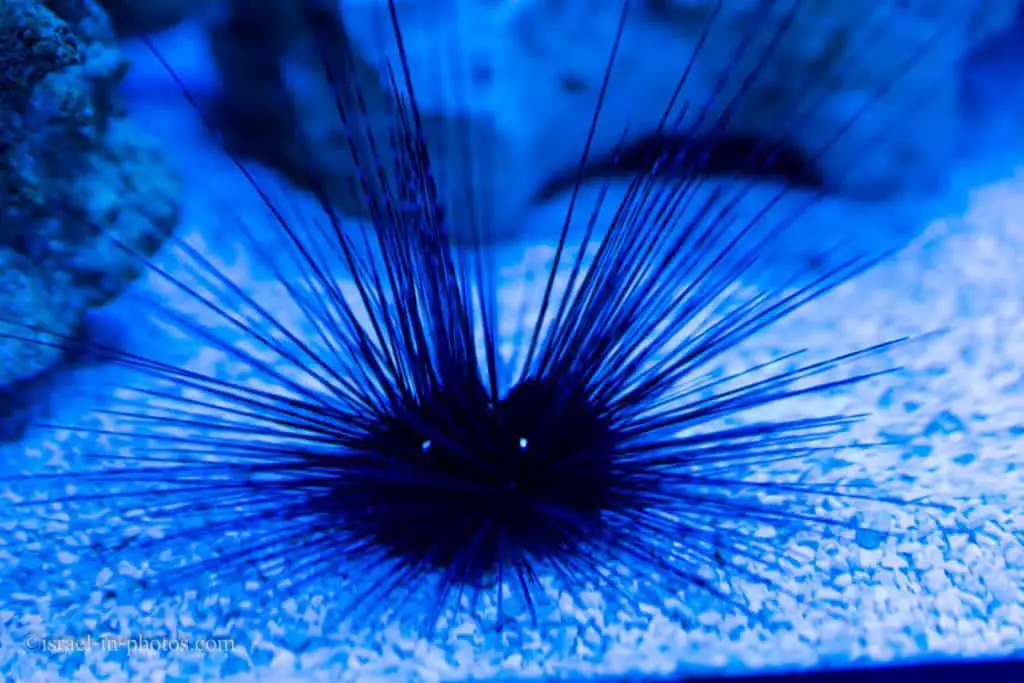
Longhorn cowfish have exciting defense mechanisms. First, when stressed, it can emit deadly toxins. The horns may make it tough for predators to swallow them (these horns can grow back within a few months).
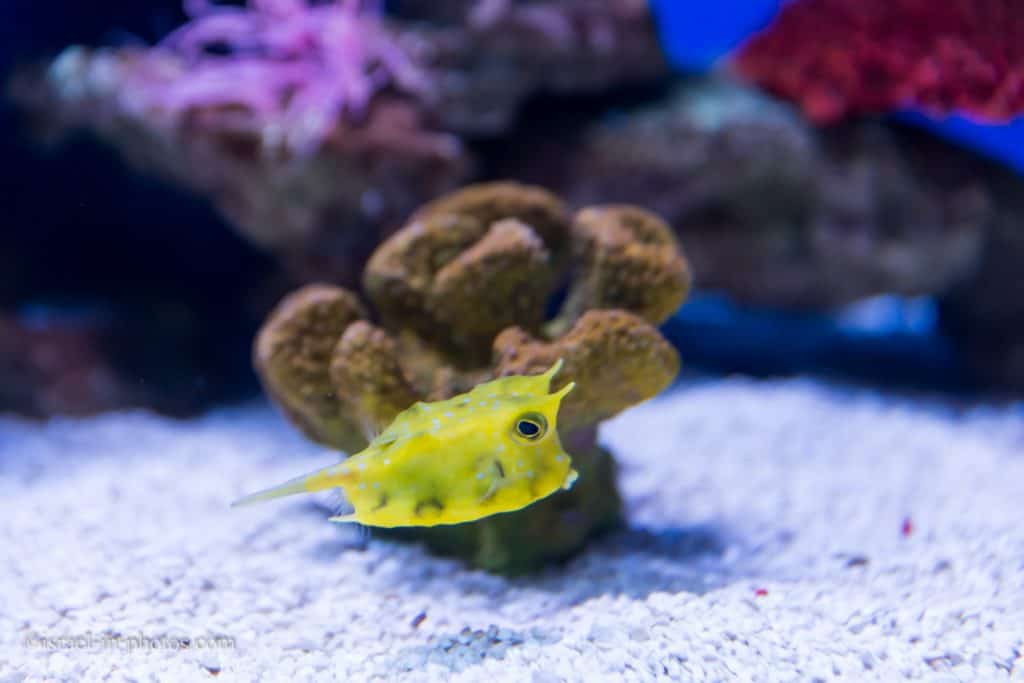
Jellyfish Gallery
A special hallway lit in a unique way with different species of jellyfish.
Source: Wikipedia
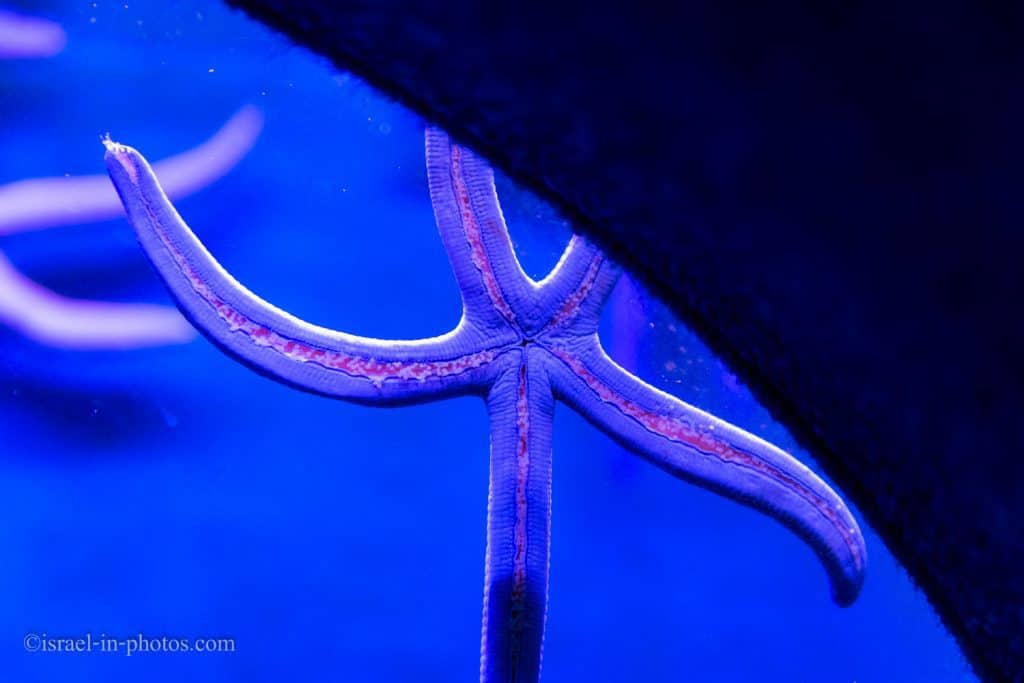
Though it is not a big gallery, I enjoyed it a lot. The jellyfish are swimming gracefully, and the lighting is continuously changing.
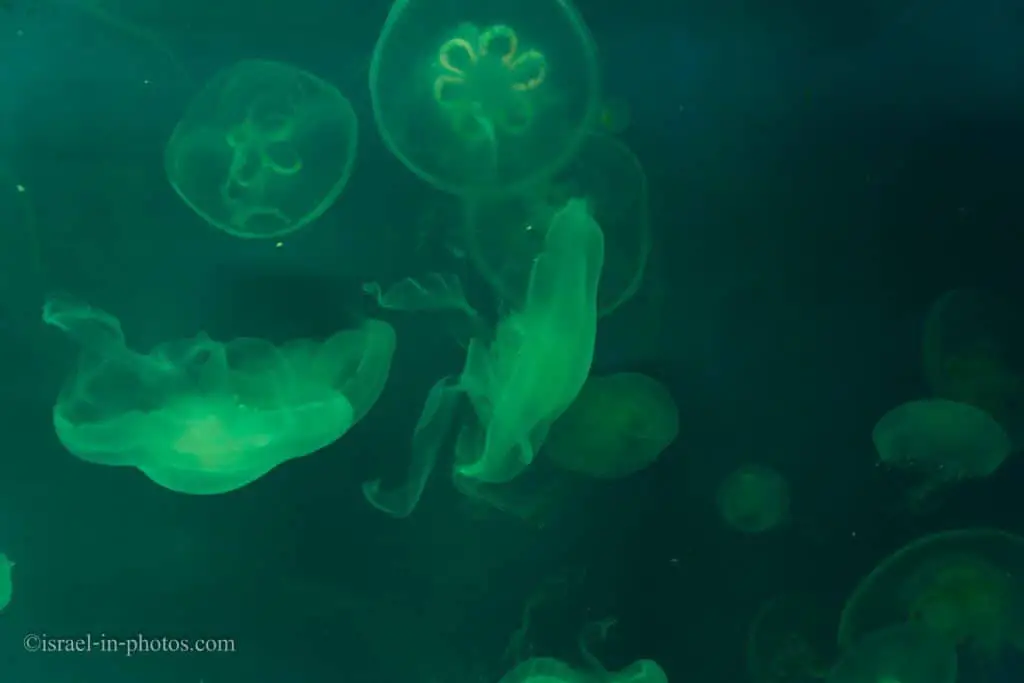
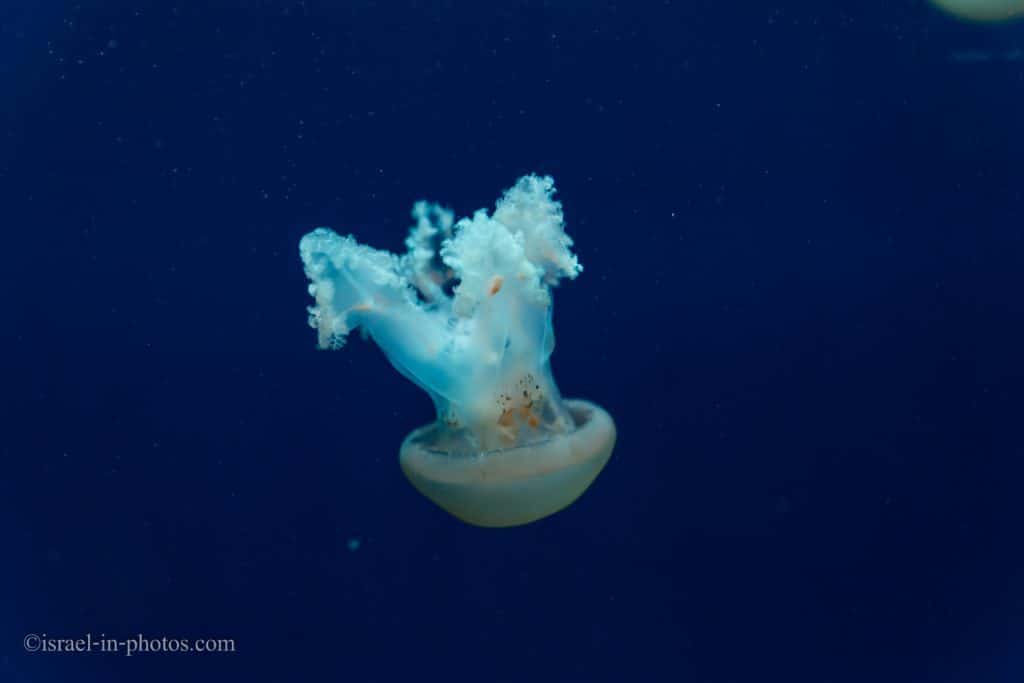
Did you know that shuttle Columbia launched a payload of 2,478 jellyfish into space? They did it to test the Effects of Microgravity-Induced Weightlessness. You can find more about this experiment here.
Second Red Sea Gallery
At the base of this gallery is a huge 25-meter exhibit showing the coral reefs of the Red Sea off the beaches of the city of Eilat. The exhibition includes hundreds of fish of different species, such as clown coris, zebra sharks, porcupine fish, pufferfish, sergeant fish, triggerfish, colorful wrasses and more.
This gallery continues with an exhibit of lobster and eel species.
Source: Wikipedia

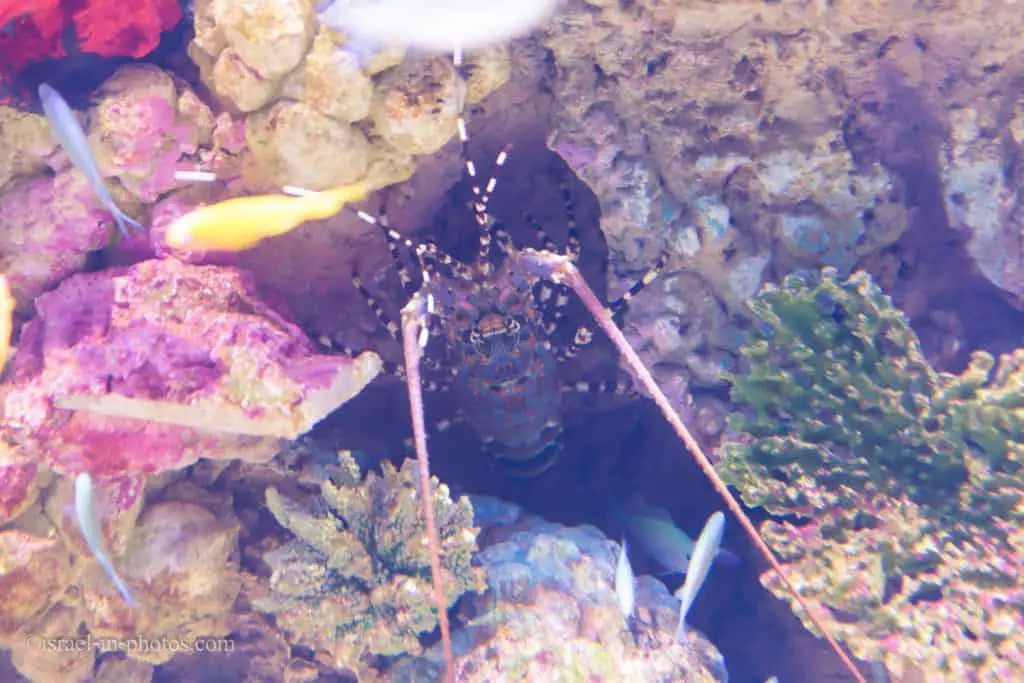
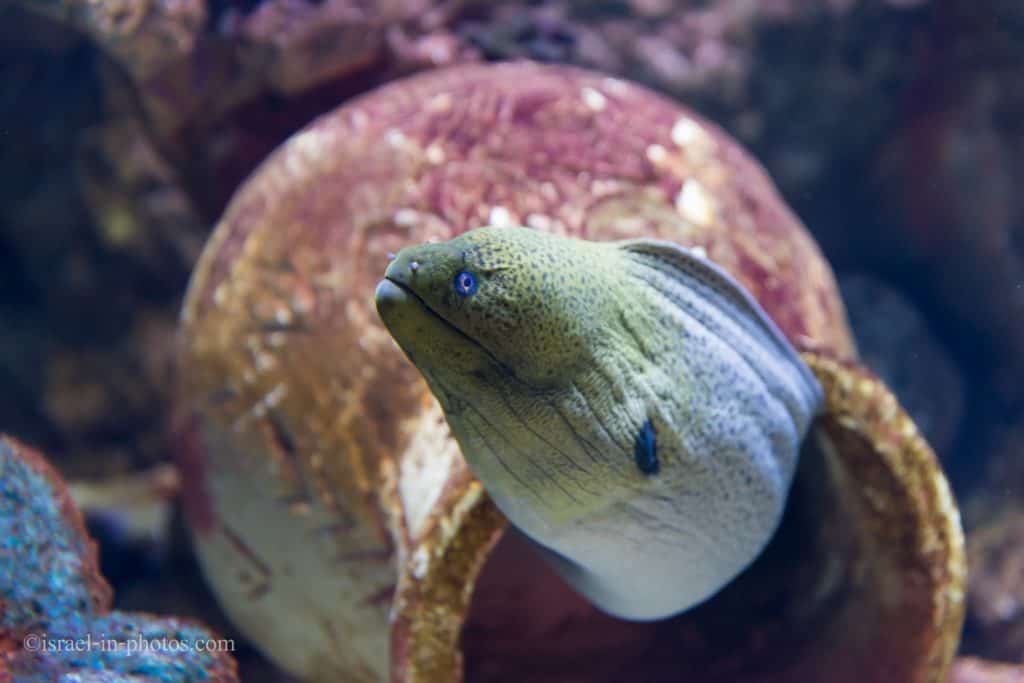
As the name suggests, the giant moray is a large eel, reaching up to 3 m (9.8 ft) in length and 30 kg (66 lb) in weight. Its elongated body is brownish in color. While juveniles are tan in color with large black spots, adults have black specks that grade into leopard-like spots behind the head.
Source: Wikipedia
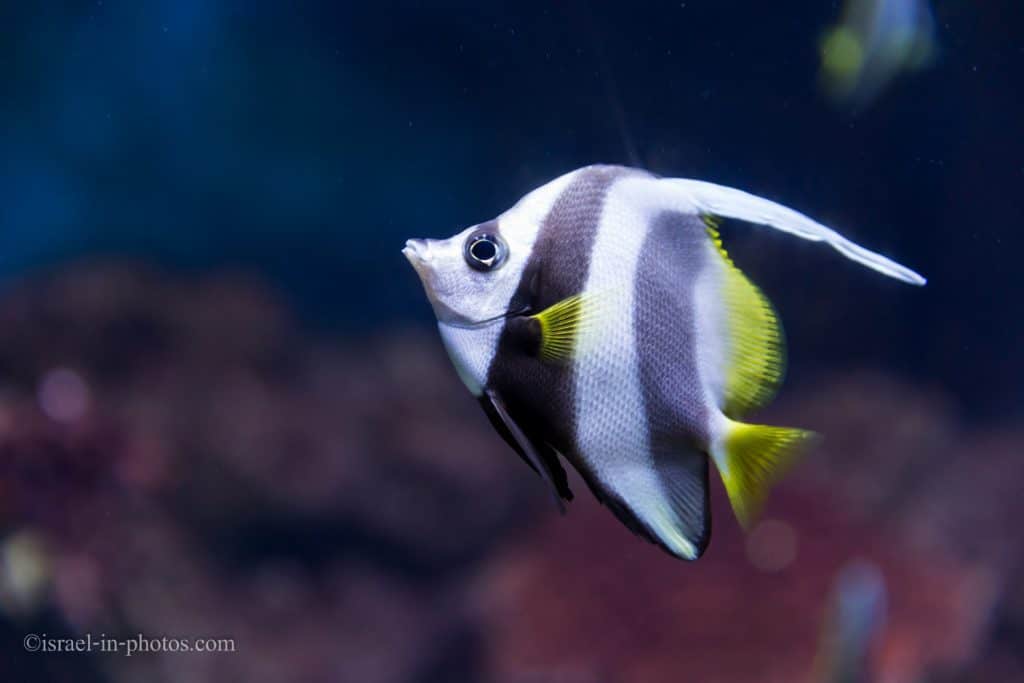
The Second Red Sea Gallery also has a unique aquarium. This water tank has a tunnel where children (and parents) can crawl and see the fish from the other side. Also, you can photograph your kids with the inhabitants of this aquarium, like the child in red in the next photo.
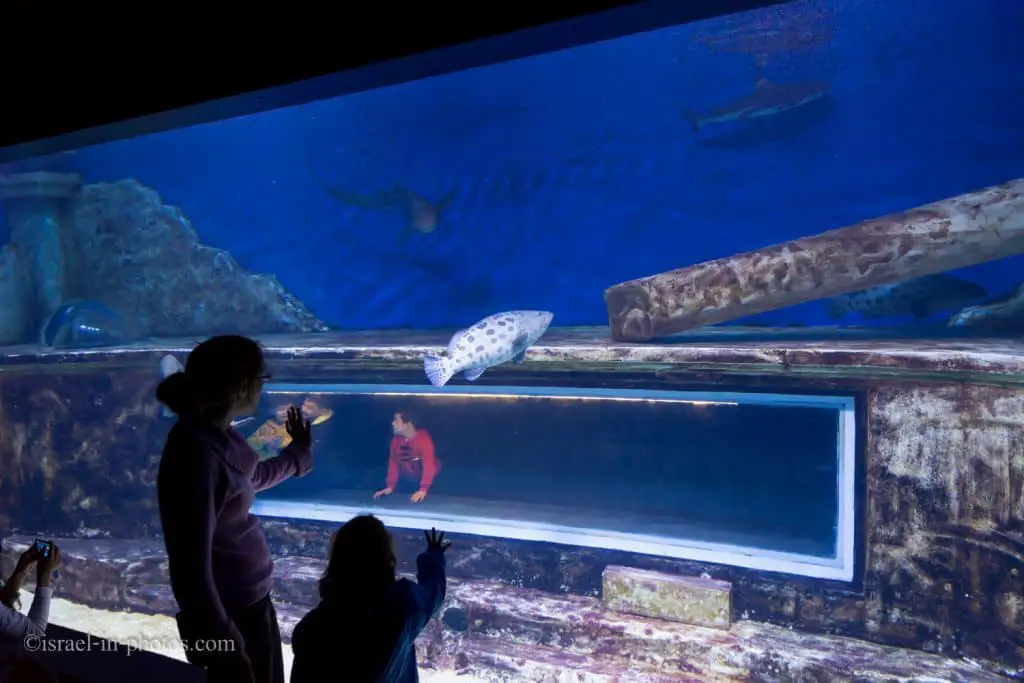
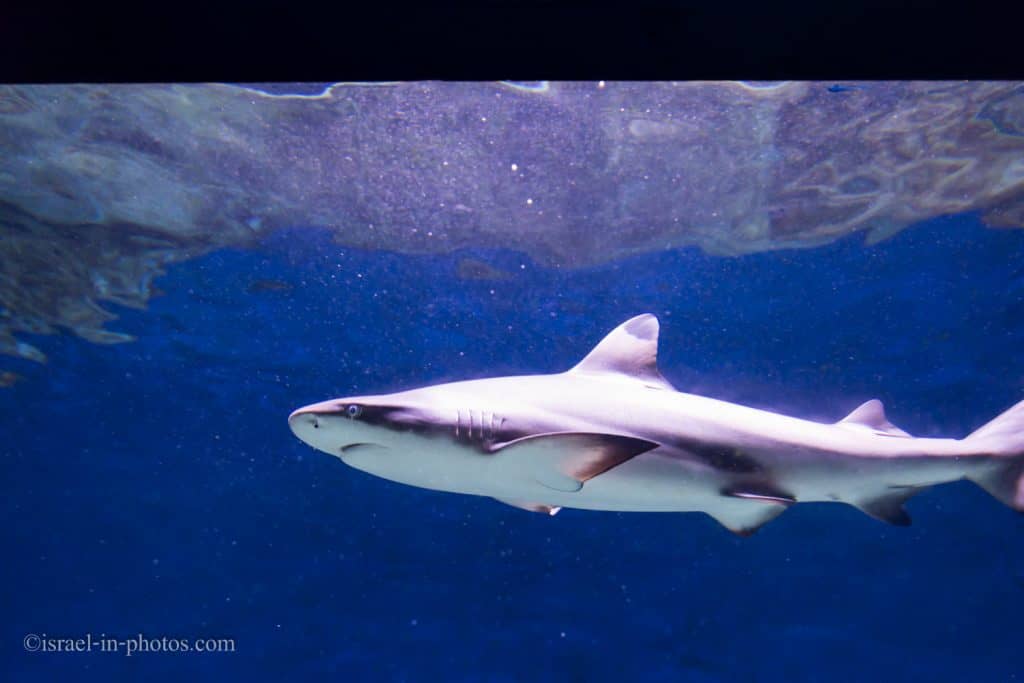
Shell Collection
The aquarium features a large collection of shells from around the world.
Source: Wikipedia
After the shell collection, we continued to the Education Center. The Education Center was screening a movie that told the story of the Israel Aquarium, specifically about its construction.
Guardians of the Sea Gallery
The last on our list was Guardians of the Sea Gallery. There, we read about different ways of protecting the sea. We also saw various artistic works. And most of them were on the topic of nature conservation.
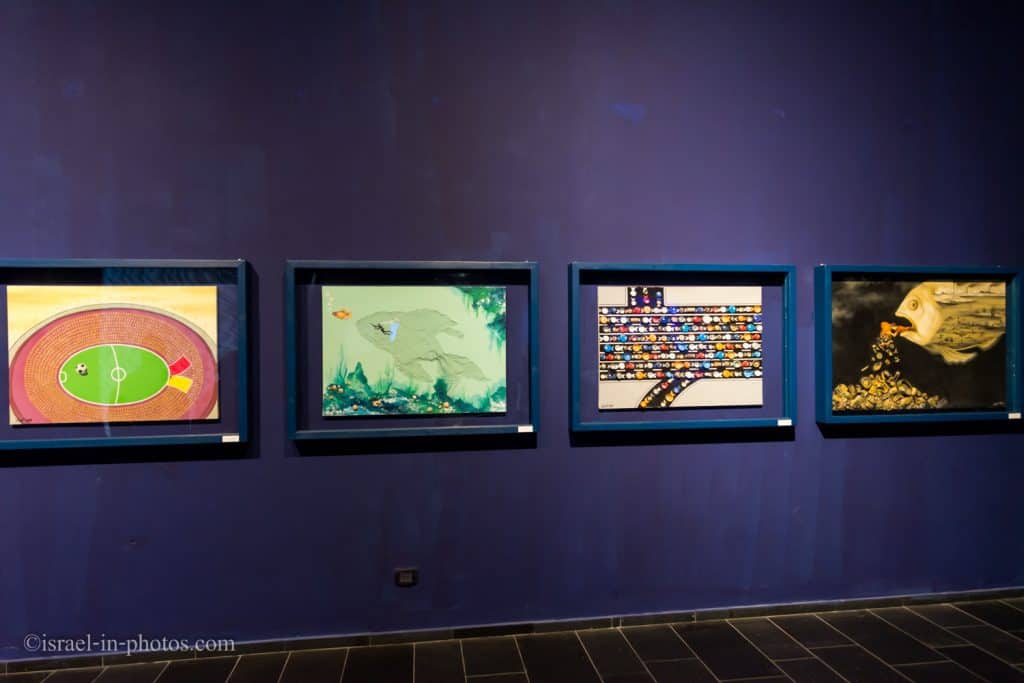

This gallery concludes our visit. And it took us a little more than two hours to complete the round trail, which is a little more than the suggested one and a half hours.
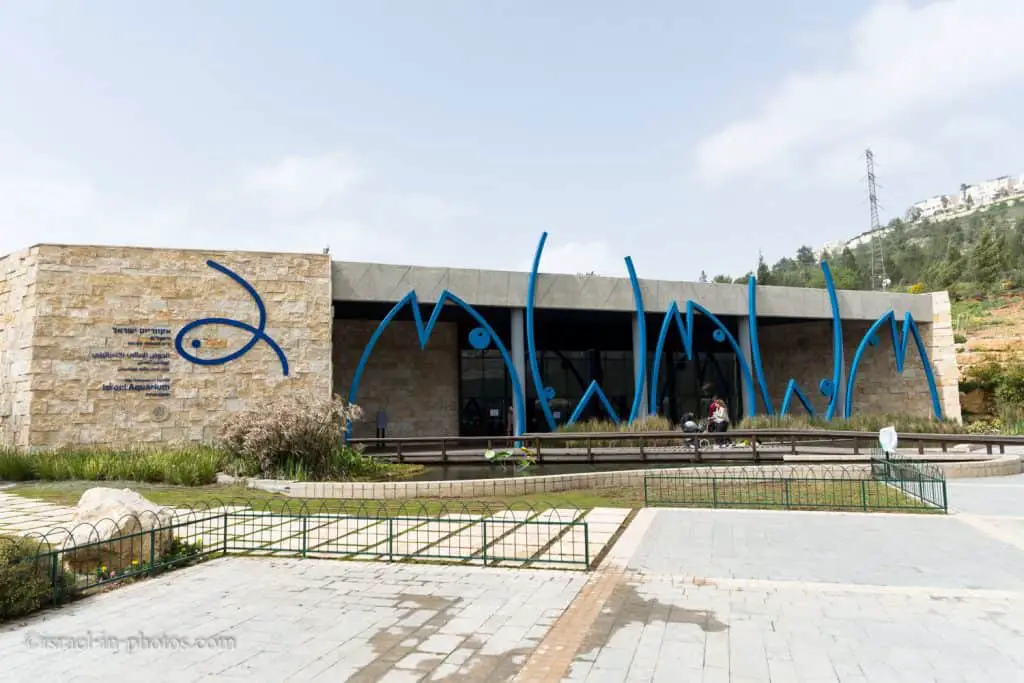
The Butterfly Exhibition
We revisited the Israel Aquarium in 2022, and there was a new attraction. An additional building within a five-minute walk (included in the entrance fee) holds the butterfly exhibition. It is a lovely addition. You can see it in the video above.
Common Questions
No, but it is highly recommended. You can book tickets at the official site.
Yes, the Israel Aquarium is situated in a newly constructed building. Thus, you can visit it both on rainy and hot days.
Most people spend there about two hours. But you can always explore at your own pace.
Yes. You can find available slots at the official site.
Yes. The building is adjusted for people in wheelchairs and parents with baby strollers.
Summary
Both the kids and the adults enjoyed our visit to the Israel Aquarium. Moreover, since the whole activity is inside the building, it is the perfect solution for a rainy or sweltering day.
If you want additional ideas for activities with children, check out Jerusalem With Kids.
And if you love aquariums, check out Underwater Observatory Marine Park in Eilat.
Have you been to the Israel Aquarium? Tell us about your experience in the comments below.
That’s all for today, and I’ll see you in future travels!
Stay Tuned!
For additional points of interest nearby, check out Jerusalem.
Additional Resources
Here are several resources that I created to help travelers:- Trip Planner with Attractions and Itineraries is the page that will help you create your perfect travel route.
- What is the Best Time to visit Israel? To answer this question, we will consider the weather, prices, holidays, festivals, and more.
- Information and Tips for Tourists to Israel will answer the most common questions tourists have about Israel (including safety, passports, weather, currency, tipping, electricity, and much more).
- Israel National Parks and Nature Reserves include a complete list, top ten, map, tickets (Israel Pass, Matmon, combo), and campsites.
- If you are looking for things to do, here are the pages for Jerusalem, Tel Aviv, Haifa, Sea Of Galilee, Akko (Acre), Eilat, Nazareth, Safed (Tzfat), and Makhtesh Ramon.

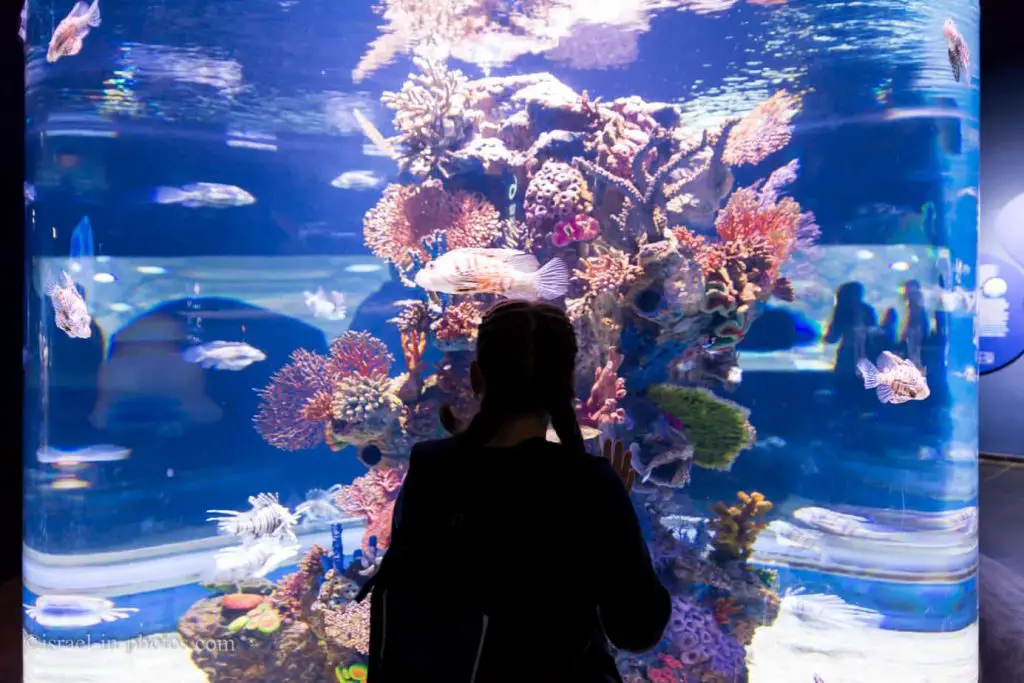







Many thanks, this website is extremely beneficial.